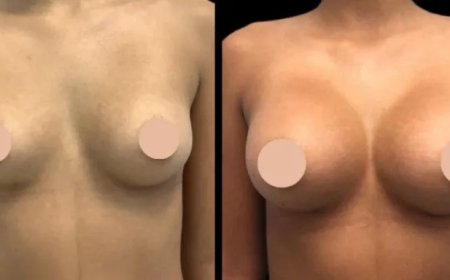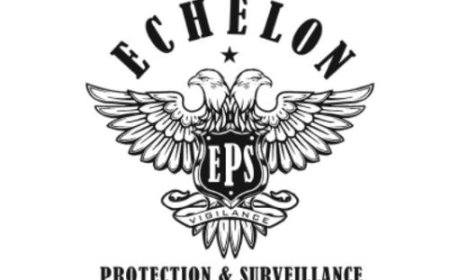How to Fix Linux Boot Issue
How to Fix Linux Boot Issue Linux is renowned for its stability, security, and flexibility—qualities that make it a preferred choice for servers, developers, and power users alike. Yet even the most robust operating systems can encounter boot failures. A Linux boot issue can manifest in many ways: a blank screen after the BIOS/UEFI stage, a kernel panic, a stuck initramfs prompt, or simply an endl
How to Fix Linux Boot Issue
Linux is renowned for its stability, security, and flexibility—qualities that make it a preferred choice for servers, developers, and power users alike. Yet even the most robust operating systems can encounter boot failures. A Linux boot issue can manifest in many ways: a blank screen after the BIOS/UEFI stage, a kernel panic, a stuck initramfs prompt, or simply an endless loop of loading messages. These problems can halt productivity, disrupt services, and cause data access challenges if not addressed promptly and correctly.
Fixing a Linux boot issue is not merely a technical task—it’s a critical skill for anyone managing Linux systems. Whether you’re a system administrator maintaining enterprise servers or a hobbyist running a personal workstation, understanding how to diagnose and resolve boot failures ensures minimal downtime and maximizes system resilience. This guide provides a comprehensive, step-by-step approach to identifying, diagnosing, and resolving the most common Linux boot issues across distributions such as Ubuntu, CentOS, Fedora, Debian, and Arch Linux.
By the end of this tutorial, you’ll have a clear methodology for troubleshooting boot problems, access to proven tools and techniques, and real-world examples that illustrate how to recover from actual failure scenarios. This knowledge empowers you to act confidently, even under pressure, and avoid the common pitfalls that lead to prolonged system unavailability.
Step-by-Step Guide
1. Identify the Type of Boot Failure
Before attempting any fix, it’s essential to determine the nature of the boot issue. Linux boot failures typically fall into one of five categories:
- BIOS/UEFI not detecting the boot device – The system doesn’t recognize the hard drive or SSD containing the Linux installation.
- GRUB bootloader failure – The bootloader is missing, corrupted, or misconfigured, preventing the kernel from loading.
- Kernel panic – The Linux kernel encounters a critical error during initialization and halts the boot process.
- Initramfs/Initrd hang – The initial RAM filesystem fails to mount the root filesystem, often due to missing drivers or corrupted filesystems.
- Filesystem corruption or mount failure – The root or other critical partitions are damaged, preventing the system from proceeding past early boot stages.
Observe the screen carefully during boot. Note any error messages, codes, or prompts. Take a photo if possible. These details are invaluable for diagnosis. For example, a message like “error: no such partition” points to GRUB, while “VFS: Unable to mount root fs” indicates a filesystem or driver issue.
2. Access the UEFI/BIOS Settings
If the system doesn’t boot at all or displays “No bootable device,” the first step is to verify the firmware settings:
- Restart the machine and press the appropriate key to enter UEFI/BIOS (commonly F2, F10, Del, or Esc).
- Navigate to the Boot tab.
- Ensure the correct drive (e.g., “Samsung SSD 980 Pro” or “Hard Disk WDC WD10EZEX”) is listed as the first boot option.
- If Secure Boot is enabled and you’re using a non-signed kernel (e.g., custom or older distributions), temporarily disable it to rule out signature verification issues.
- Save changes and exit.
On systems with multiple operating systems (dual-boot), ensure Linux is selected as the default boot target. Some UEFI implementations default to Windows Boot Manager even after Linux installation.
3. Boot from a Live USB/CD
If the system still fails to boot, you’ll need to access a rescue environment. Create a bootable Linux USB using another machine:
- Download the ISO of your Linux distribution (e.g., Ubuntu 22.04 LTS).
- Use tools like Rufus (Windows), balenaEtcher (cross-platform), or
dd(Linux/macOS) to write the ISO to a USB drive. - Insert the USB into the affected machine and boot from it.
- Select “Try Linux without installing” to enter a live session.
This live environment gives you full access to the system’s filesystem, allowing you to diagnose and repair the installation without modifying it prematurely.
4. Mount the Root Filesystem
Once in the live session, identify and mount your Linux root partition:
lsblk
This command lists all block devices. Look for the partition with the Linux filesystem type (e.g., ext4, btrfs, xfs) and the correct size matching your installation. For example:
NAME MAJ:MIN RM SIZE RO TYPE MOUNTPOINT
sda 8:0 0 256G 0 disk
├─sda1 8:1 0 1G 0 part /boot/efi
├─sda2 8:2 0 50G 0 part /mnt
└─sda3 8:3 0 205G 0 part
In this case, /dev/sda2 is the root partition. Mount it:
sudo mkdir /mnt/linux
sudo mount /dev/sda2 /mnt/linux
If you have a separate /boot partition, mount it too:
sudo mount /dev/sda1 /mnt/linux/boot
For systems using LVM, activate the volume group first:
sudo vgscan
sudo vgchange -ay
ls /dev/mapper/
sudo mount /dev/mapper/vg_name-lv_root /mnt/linux
5. Chroot into the System
Chrooting allows you to operate as if you’re inside the broken installation, enabling you to run repair commands natively:
sudo mount --bind /dev /mnt/linux/dev
sudo mount --bind /proc /mnt/linux/proc
sudo mount --bind /sys /mnt/linux/sys
sudo chroot /mnt/linux
You’re now inside your system’s environment. Verify by checking the distribution:
cat /etc/os-release
6. Repair GRUB Bootloader
GRUB (Grand Unified Bootloader) is the most common cause of Linux boot failures. If you see “GRUB rescue>” or “error: unknown filesystem,” GRUB is corrupted or misconfigured.
Reinstall GRUB based on your firmware type:
For UEFI Systems:
grub-install --target=x86_64-efi --efi-directory=/boot/efi --bootloader-id=GRUB
update-grub
Ensure /boot/efi is mounted and contains the EFI partition. If the EFI directory is missing, create it:
mkdir -p /boot/efi
mount /dev/sda1 /boot/efi
For Legacy BIOS Systems:
grub-install /dev/sda
update-grub
Replace /dev/sda with your actual disk (not partition). Do not use /dev/sda1.
After running these commands, exit chroot and reboot:
exit
sudo umount -R /mnt/linux
sudo reboot
7. Fix Kernel Panic or Initramfs Issues
If the system hangs at the initramfs prompt with a message like “Give root password for maintenance,” the root filesystem may be corrupted or the initramfs lacks necessary drivers.
First, attempt to manually mount the root filesystem from the initramfs prompt:
ls /dev/sd*
mount /dev/sda2 /mnt
chroot /mnt
If successful, run a filesystem check:
fsck -f /dev/sda2
Rebuild the initramfs to ensure all required modules are included:
update-initramfs -u
On RHEL/CentOS/Fedora systems, use:
dracut --force
If the issue persists, check for missing kernel modules. For example, if you’re using NVMe drives and the initramfs doesn’t include the nvme driver:
lsmod | grep nvme
If nothing appears, add the module to initramfs:
echo "nvme" >> /etc/initramfs-tools/modules
update-initramfs -u
8. Repair Filesystem Corruption
Filesystem corruption is a common cause of boot failure, especially after improper shutdowns or power loss. Always check the filesystem before attempting to mount it:
fsck -f /dev/sda2
Use -f to force a check even if the filesystem appears clean. Answer “yes” to all repair prompts unless you’re certain of the consequences.
For ext4 filesystems, additional checks include:
e2fsck -c /dev/sda2 Check for bad blocks
e2fsck -D /dev/sda2 Optimize directory structure
If fsck reports unrecoverable errors, the partition may be physically damaged. Consider backing up data immediately from the live environment and replacing the drive.
9. Restore or Reconfigure /etc/fstab
The /etc/fstab file defines how disk partitions are mounted at boot. A misconfigured entry can cause the system to halt during boot, waiting for a nonexistent or corrupted device.
Check the current fstab:
cat /etc/fstab
Compare it with the output of lsblk -f to verify UUIDs and mount points match. If a UUID is incorrect or a partition no longer exists, comment out or correct the line:
UUID=deadbeef-1234 /mnt/olddata ext4 defaults 0 2
Use UUIDs instead of device names (e.g., /dev/sda2) in fstab, as device names can change across reboots. To find the correct UUID:
blkid
Then update fstab accordingly. Save and reboot.
10. Reinstall or Rebuild the Kernel
If the kernel image is corrupted or incompatible, the system may panic immediately after loading it. In the chroot environment:
On Debian/Ubuntu:
apt update
apt install --reinstall linux-image-generic linux-headers-generic
update-grub
On RHEL/CentOS/Fedora:
dnf reinstall kernel
dracut --force
grub2-mkconfig -o /boot/grub2/grub.cfg
On Arch Linux:
pacman -S linux linux-headers
mkinitcpio -P
grub-mkconfig -o /boot/grub/grub.cfg
After reinstalling, verify the kernel files exist in /boot:
ls /boot/vmlinuz*
ls /boot/initramfs-*.img
11. Check for Disk Space and Inode Exhaustion
Full root partitions or inode exhaustion can prevent the system from booting, even if the filesystem is otherwise healthy. In the live session:
df -h /mnt/linux
df -i /mnt/linux
If /boot is full (common after failed kernel updates), clean old kernels:
dpkg --list | grep linux-image Ubuntu/Debian
sudo apt autoremove --purge
On RHEL-based systems:
rpm -qa kernel
sudo dnf remove kernel-
On Arch:
pacman -Qq linux | grep -v linux-headers
sudo pacman -Rns
12. Test and Reboot
After completing repairs, unmount all filesystems and reboot:
exit
sudo umount -R /mnt/linux
sudo reboot
Remove the live USB before rebooting. If the system boots successfully, log in and verify:
- System services are running:
systemctl status - Network connectivity:
ping 8.8.8.8 - Filesystem integrity:
dmesg | grep -i error
If the system boots but behaves oddly, check logs:
journalctl -b -p 3
This shows all errors from the current boot.
Best Practices
Regular System Updates
Keeping your Linux system updated is the single most effective way to prevent boot issues. Kernel updates often include critical fixes for hardware compatibility and boot-related bugs. Schedule regular updates using cron or systemd timers:
sudo apt update && sudo apt upgrade -y Debian/Ubuntu
sudo dnf upgrade -y RHEL/Fedora
sudo pacman -Syu Arch
Always reboot after a kernel update to ensure the new version is active.
Backup Critical Files
Regularly back up the following files and directories:
/etc/fstab/boot/grub/grub.cfg(or/boot/efi/EFI/*/grub.cfgon UEFI)/etc/default/grub/etc/initramfs-tools/conf.d/(Debian/Ubuntu)
Store these backups on an external drive or cloud storage. In the event of a catastrophic failure, restoring these files can save hours of troubleshooting.
Use LVM and RAID for Resilience
For production servers, consider using Logical Volume Manager (LVM) and software RAID (mdadm). LVM allows you to resize partitions without reinstalling, and RAID-1 (mirroring) ensures data redundancy. If one disk fails, the system can still boot from the mirror.
Enable Automatic Kernel Recovery
Modern Linux distributions support kernel fallback mechanisms. On GRUB-based systems, ensure multiple kernel versions are installed. If the latest kernel fails to boot, GRUB will automatically fall back to the previous one.
On Ubuntu, install linux-image-generic to ensure automatic kernel updates. On RHEL, use dnf install kernel-latest to maintain a recent stable kernel.
Monitor Disk Health
Use SMART tools to monitor drive health:
sudo smartctl -a /dev/sda
Look for attributes like Reallocated_Sector_Ct, Pending_Sector, and Uncorrectable_Error_Count. Values above zero indicate potential drive failure. Schedule monthly SMART checks via cron:
0 2 * * 0 /usr/sbin/smartctl -a /dev/sda > /var/log/smart-sda.log
Document Your Boot Configuration
Keep a simple text file on your system (or in a secure cloud note) with:
- Partition layout (
lsblk -foutput) - GRUB configuration details
- Root UUID and boot partition UUID
- Any custom kernel parameters in
/etc/default/grub
This documentation becomes invaluable during emergencies, especially when you can’t access the system directly.
Tools and Resources
Essential Command-Line Tools
- lsblk – Lists block devices and their mount points.
- blkid – Displays UUIDs and filesystem types of partitions.
- fsck – Filesystem check and repair utility.
- grub-install – Reinstalls the GRUB bootloader.
- update-grub – Regenerates GRUB configuration (Debian/Ubuntu).
- grub2-mkconfig – Equivalent of update-grub on RHEL/Fedora.
- update-initramfs – Rebuilds the initial RAM filesystem (Debian/Ubuntu).
- dracut – Rebuilds initramfs on RHEL/Fedora/Arch.
- mkinitcpio – Arch Linux’s initramfs generator.
- smartctl – SMART disk health monitoring.
- journalctl – Systemd log viewer; use
-bfor current boot.
Live Boot Distributions
These are specialized Linux distributions designed for system recovery:
- SystemRescue – Comprehensive recovery toolkit with GUI and CLI tools.
- GRML – Lightweight, powerful rescue environment with advanced filesystem tools.
- Ubuntu Live USB – Widely available and compatible with most hardware.
- Super Grub2 Disk – Specialized for bootloader repair only.
Download these from their official websites and create a persistent USB for future use.
Online Resources and Communities
When documentation isn’t enough, turn to trusted communities:
- Ask Ubuntu – https://askubuntu.com
- Unix & Linux Stack Exchange – https://unix.stackexchange.com
- Reddit r/linuxquestions – https://reddit.com/r/linuxquestions
- Arch Wiki – https://wiki.archlinux.org – Exceptionally detailed and accurate.
- Linux Foundation Documentation – https://training.linuxfoundation.org
Always search before asking. Many boot issues have been documented extensively with step-by-step fixes.
Automated Repair Scripts
For advanced users, consider creating a simple recovery script:
!/bin/bash
recovery.sh
echo "Mounting root partition..."
mount /dev/sda2 /mnt
mount --bind /dev /mnt/dev
mount --bind /proc /mnt/proc
mount --bind /sys /mnt/sys
chroot /mnt
echo "Reinstalling GRUB..."
grub-install /dev/sda
update-grub
echo "Rebuilding initramfs..."
update-initramfs -u
echo "Exiting..."
exit
Store this on your recovery USB and run it after mounting your root partition. Customize it for your distribution.
Real Examples
Example 1: Ubuntu System Stuck at Initramfs Prompt
Scenario: After a power outage, an Ubuntu 22.04 server fails to boot and drops to initramfs with the message: “Gave up waiting for root device.”
Diagnosis: Using a live USB, the user runs lsblk and sees the root partition is /dev/nvme0n1p2. Running fsck reveals:
fsck from util-linux 2.37.2
/dev/nvme0n1p2: Superblock last write time is in the future.
Resolution: The system clock was incorrect during shutdown, causing the filesystem to think it was corrupted. The user runs:
fsck -y /dev/nvme0n1p2
Then rebuilds initramfs:
update-initramfs -u
After reboot, the system starts normally. The user also sets NTP to prevent future time-related issues:
timedatectl set-ntp true
Example 2: GRUB Rescue Prompt After Windows Update
Scenario: A dual-boot system with Windows 11 and Fedora 38 suddenly boots to “grub rescue>” after a Windows update.
Diagnosis: Windows Update overwrote the UEFI boot entry. The user boots into a live Ubuntu USB and runs:
efibootmgr -v
Output shows no Fedora entry. The user remounts the EFI partition and reinstalls GRUB:
mount /dev/nvme0n1p1 /mnt
grub-install --target=x86_64-efi --efi-directory=/mnt --bootloader-id=Fedora
update-grub
After reboot, the GRUB menu reappears with both Windows and Fedora options.
Example 3: CentOS 8 Boot Failure Due to Full /boot Partition
Scenario: A CentOS 8 server fails to boot with a kernel panic. The screen flashes: “No space left on device.”
Diagnosis: Using a live CD, the user mounts the root partition and finds:
df -h /boot
Filesystem Size Used Avail Use% Mounted on
/dev/sda1 1.0G 1.0G 0 100% /boot
Resolution: The user lists installed kernels:
rpm -qa kernel
Deletes the two oldest:
sudo rpm -e kernel-4.18.0-147.el8
sudo rpm -e kernel-4.18.0-193.el8
Then regenerates GRUB and initramfs:
dracut --force
grub2-mkconfig -o /boot/grub2/grub.cfg
Rebooting succeeds. The user then configures automatic cleanup:
dnf install dnf-plugin-auto-remove
dnf config-manager --setopt=installonly_limit=2 --save
FAQs
Why does my Linux system keep dropping to initramfs?
Most commonly, this occurs when the initramfs cannot find or mount the root filesystem. Causes include:
- Incorrect UUID in
/etc/fstab - Missing storage drivers (e.g., NVMe, RAID controller)
- Corrupted root filesystem
- Hardware failure (e.g., failing SSD)
Use lsblk and blkid to verify partition identifiers and run fsck to repair.
Can I fix a boot issue without a live USB?
Only if you have access to a rescue shell from GRUB (e.g., “Advanced options” → “Recovery mode”). Otherwise, a live USB is essential. Some distributions offer network boot options (PXE), but these require infrastructure.
What if I don’t know which partition is my root?
Use lsblk -f in the live environment. Look for the partition with the Linux filesystem type (ext4, xfs, btrfs) and the largest size matching your installation. Check contents with ls /mnt/linux/etc to confirm it contains files like passwd or os-release.
Why does GRUB keep getting overwritten?
Windows updates often overwrite the UEFI boot entry to prioritize Windows Boot Manager. To prevent this, disable Fast Startup in Windows and use efibootmgr to set Linux as the default boot entry:
efibootmgr -o 0001,0000
(Replace numbers with your actual boot order from efibootmgr -v.)
Is it safe to run fsck on a mounted filesystem?
No. Always unmount the filesystem first. Running fsck on a mounted partition can cause severe data corruption. Use the live environment to ensure the filesystem is not in use.
How can I prevent boot issues after kernel updates?
Always keep at least two kernel versions installed. Most distributions automatically retain the previous kernel. Avoid removing old kernels unless you’re certain the new one works. Use uname -r to confirm your current kernel before uninstalling others.
My system boots but freezes at the login screen. Is this a boot issue?
No. This is a display manager or desktop environment issue (e.g., Xorg, GDM, SDDM). Boot issues occur before the login screen. Use Ctrl+Alt+F2 to switch to a TTY and troubleshoot services like gdm or lightdm.
Conclusion
Fixing a Linux boot issue is not an act of magic—it’s a methodical process of diagnosis, isolation, and repair. By understanding the Linux boot sequence—from firmware initialization to kernel loading and filesystem mounting—you gain the ability to intervene effectively at any stage. This guide has equipped you with the tools, techniques, and real-world examples needed to recover from the most common boot failures.
Remember: prevention is always better than cure. Regular updates, filesystem checks, and backups form the foundation of system resilience. Keep a recovery USB handy, document your configuration, and stay informed about your hardware’s health.
Linux boot issues, while intimidating, are rarely permanent. With patience and the right approach, even the most stubborn system can be restored. As you gain experience, you’ll find that each boot failure becomes not just a problem to solve—but a lesson in system architecture and reliability.
Mastering these skills doesn’t just save time—it saves data, trust, and uptime. In a world where systems are expected to run 24/7, your ability to recover Linux from a failed boot is not just technical expertise—it’s professional responsibility.

























